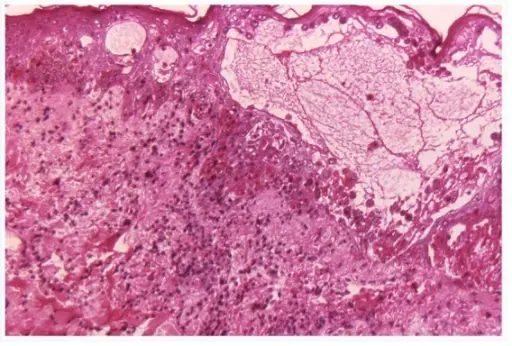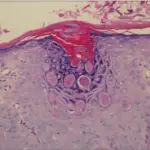Impetigo is a common superficial bacterial infection of the skin.
What is the Pathology of Impetigo?
The pathology of impetigo is:
-Etiology: The cause of impetigo is staphylococcus aureus most common and/or, streptococcus pyogenes.
-Genes involved: None.
-Pathogenesis: The sequence of events that lead to impetigo skin usually inhabited by opportunistic bacteria such as S. aureus and S. pyogenes which penetrate the skin, proliferate locally.
-Morphology: The morphology associated with impetigo shows a sub corneal pustule.
-Histology: The histology associated with impetigo shows the buildup of neutrophils beneath the stratum corneum.
How does Impetigo Present?
Patients with impetigo are typically more common in male children present at the age range of 2 to 5 years. The symptoms, features, and clinical findings associated with impetigo include erythematous macule, dry crusted, eczema, fatigue, fever, and diarrhea.
How is impetigo Diagnosed?
Impetigo is diagnosed through history and clinical appearance. Laboratory studies, bacterial culture, and sensitivity, and biopsy.
How Is Impetigo Treated?
Impetigo is treated through medical care, and topical or systemic antibiotic therapy.
What is the Prognosis of Impetigo?
The prognosis of impetigo is good. Has self-limiting of 2 to 3 weeks.



